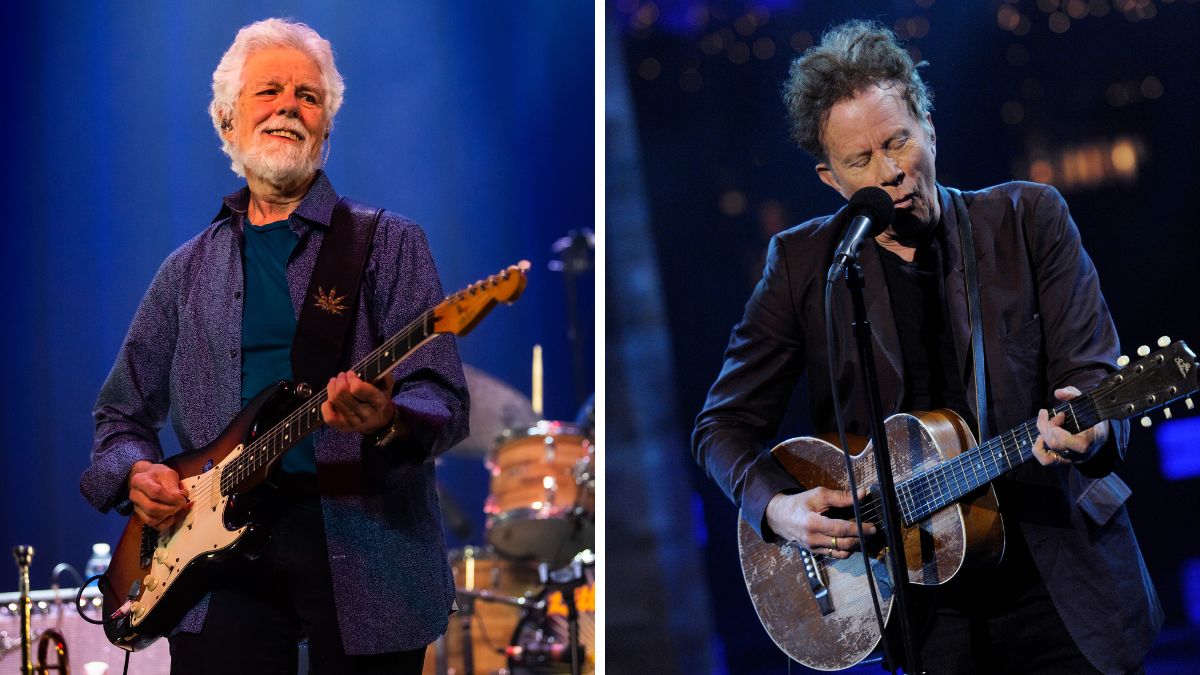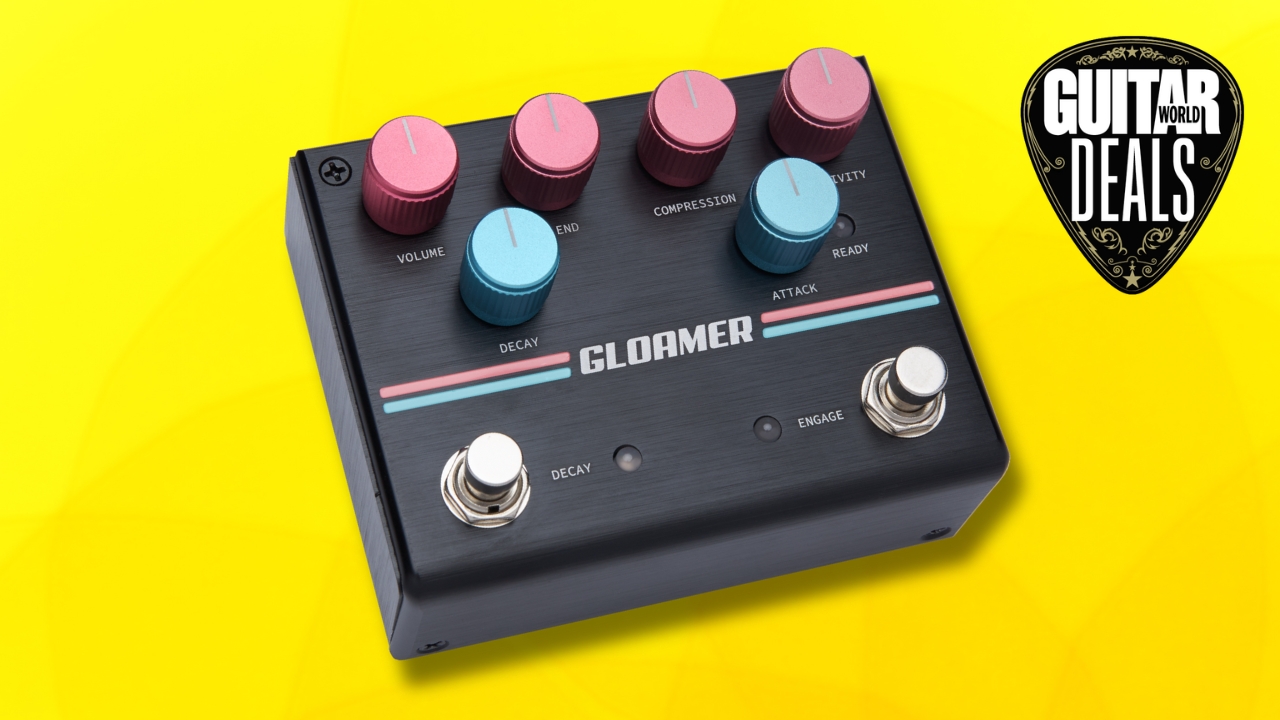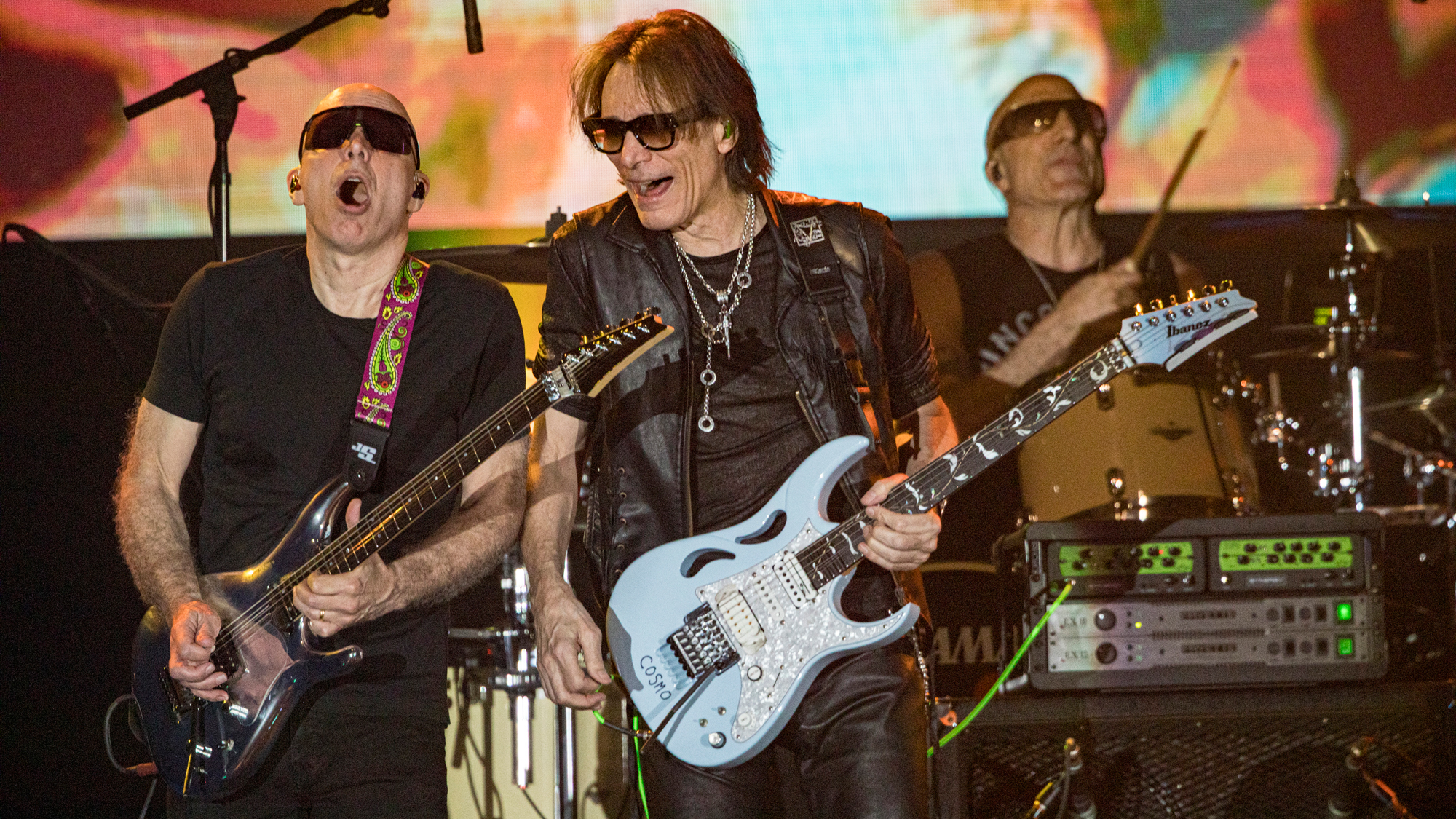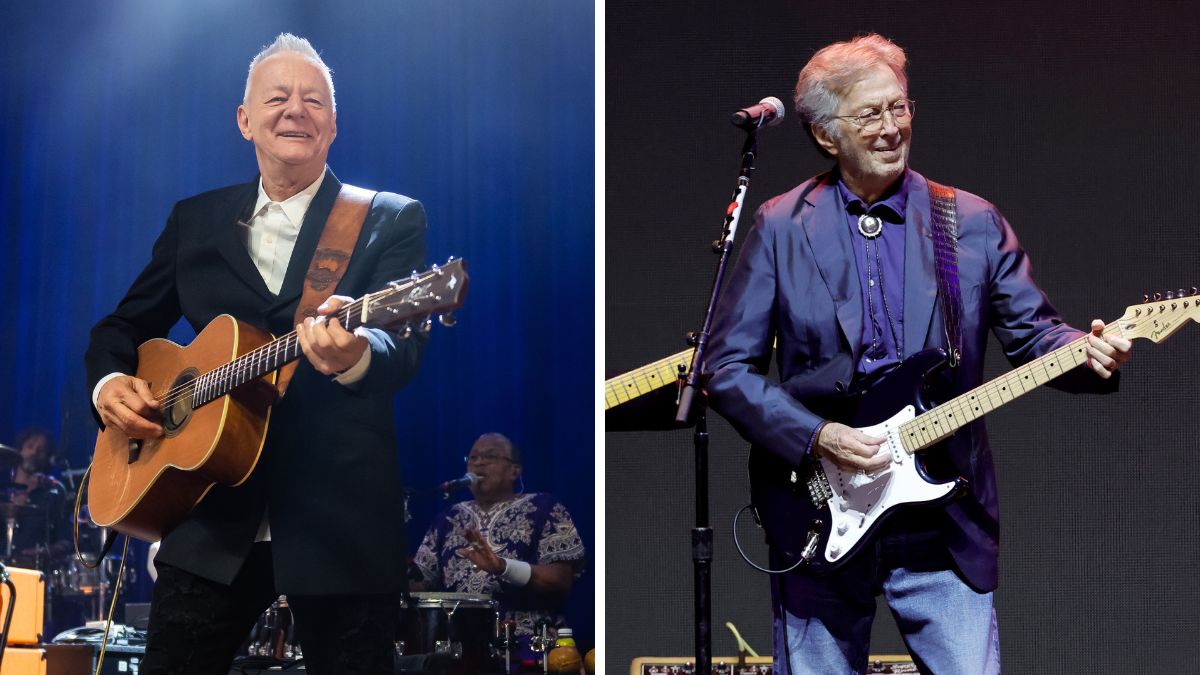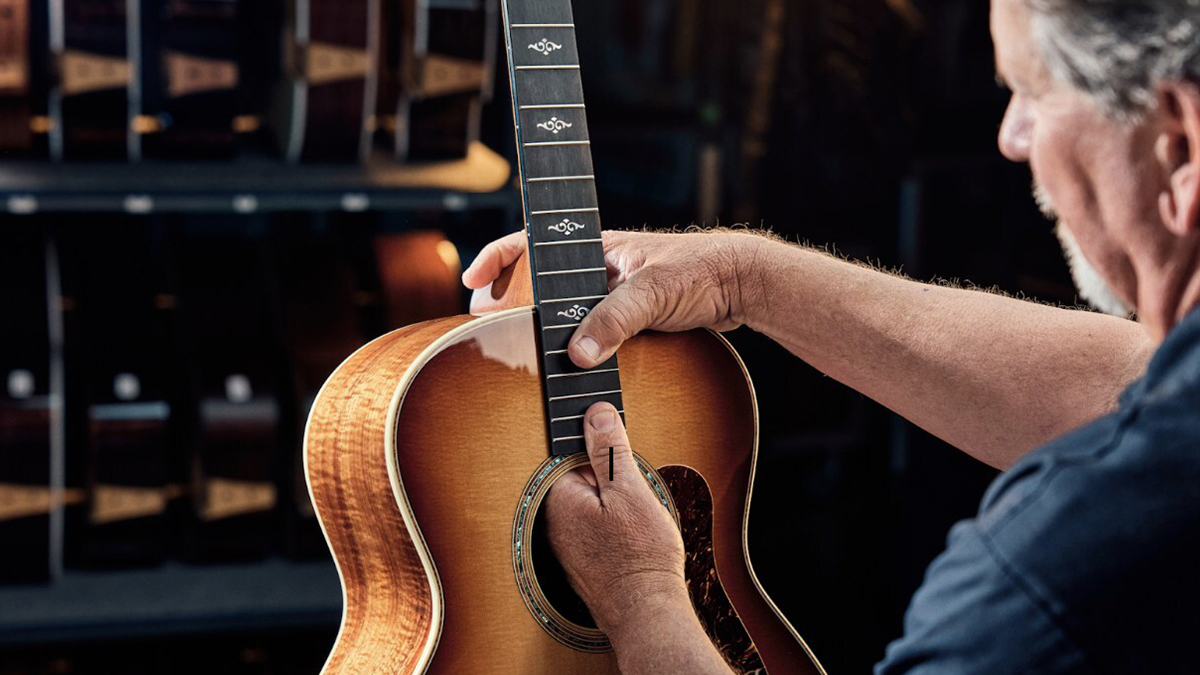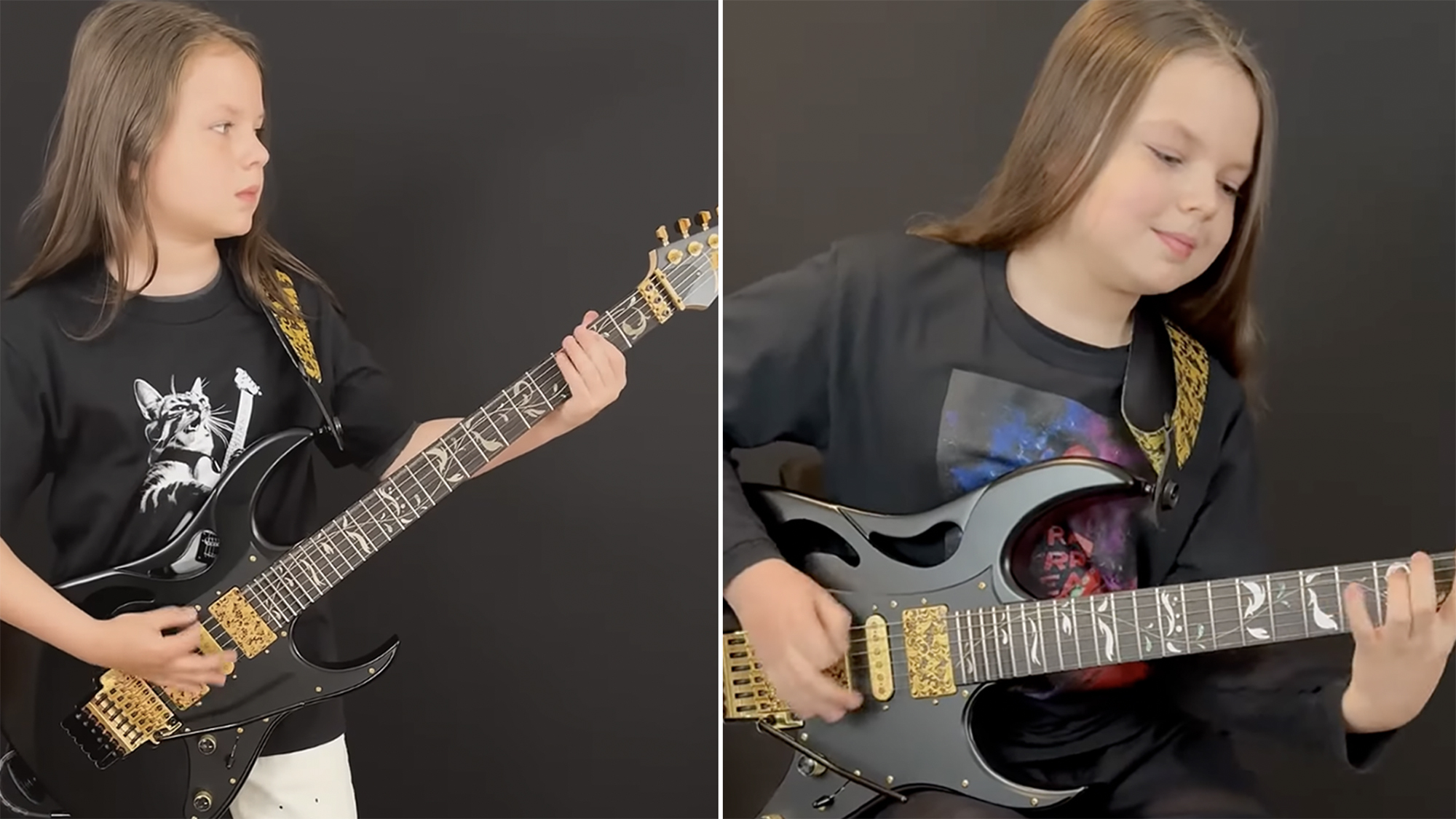Elliot Easton's guide to The Cars' discography
Take a guided tour through the discography of one of the most popular rock bands of the '70s and '80s
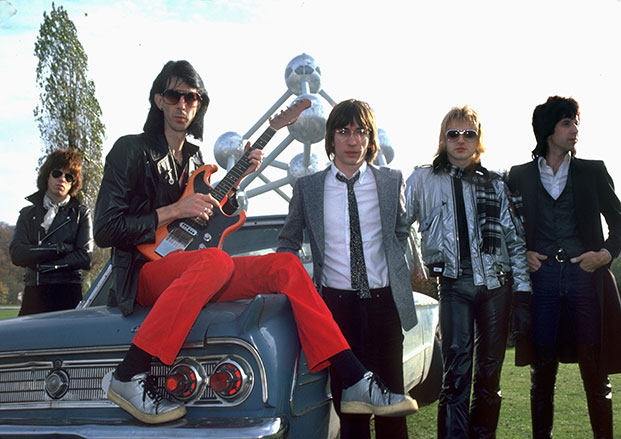
The following is taken from the August 2016 issue of Guitar World
It’s been almost 40 years since the Cars - singer, guitarist and songwriter Ric Ocasek, lead guitarist Elliot Easton, bassist and singer Benjamin Orr, keyboardist Greg Hawkes and drummer David Robinson - released their self-titled debut album, and roughly 30 since they had their last true hit.
But hear one of their songs on the radio (and you hear them a lot) - anything from Just What I Needed and My Best Friend’s Girl, to You’re All I’ve Got Tonight and Shake It Up - and it’s hardly a stretch to say they sound as vibrant, explosive and downright fresh as anything recorded today.
The band’s mix of classic-rock riffs and melodies, synthy new-wave cool, wry, often deadpan vocals and massive harmonies and hooks combined for a sound unlike any other in 1978, and made an impression on generations of bands to come; Nirvana, for one, covered My Best Friend’s Girl at their last-ever concert, in May 1994.
While today the Cars are most lauded for their way with a good hook, the Berklee-educated, left-handed–playing Easton has long been, at least to those in the know, something of their secret rock and roll weapon. Tucked between all the glossy keyboards and poppy melodies are some truly mind-blowing solos (see: the menacing Candy-O, the twangy My Best Friend’s Girl, the nimble, trill-heavy Touch and Go and the flat-out rocking Shake It Up and Just What I Needed, for starters) which demonstrate that Easton was as inventive and ferocious a guitarist as any hard rock and metal dude of his generation. And maybe even more so.
“A lot of guitar players and guys from that period, when they soloed they generally just played some blues rock licks in the key of the song,” Easton observes. “That’s not what I was about.”
All of these songs and solos, as well as much, much more, are collected on the new Rhino box set The Elektra Years 1978–1987, which presents the Cars’ six full-length studio albums (their 2011 reunion effort, Move Like This, is not included) in remastered form, with each disc housed in a replica sleeve featuring the original artwork.
Get The Pick Newsletter
All the latest guitar news, interviews, lessons, reviews, deals and more, direct to your inbox!
“A lot of guitar players and guys from that period, when they soloed they generally just played some blues rock licks in the key of the song. That's not what I was about."
Elliot Easton
On the occasion of the release, Easton sat down with Guitar World to take a tour through the Cars’ career, classic album by classic album, with plenty of pit stops along the way to discuss solos, songs and gear. In summing up the band’s output, he remarked, and rightly so, that “the music has held up very well. It’s aged nicely and still sounds unique. The Cars are a band that, within a couple of notes on the radio you know who you’re listening to. And people are still discovering the music today. So we’re very fortunate.”
As for what he believes the Cars ultimately achieved?
“The best you can hope for in a rock band is that you can add maybe another link to the chain in the evolution of the music,” Easton says. “Just move it forward a little bit. And I think we accomplished that. So what more could you ask for? It’s fabulous, you know?”
The Cars (1978)
After making a name for themselves in the clubs around Boston and releasing a demo that spawned a local radio hit in Just What I Needed, the Cars sign to Elektra Records and head to London’s AIR Studios to cut their debut effort with Queen producer Roy Thomas Baker.
By the time the band traveled to London to record The Cars, you were already very familiar with all the material that would comprise the album, correct?
That’s right. That record was pretty quick in the making because we had been playing it in the clubs for almost a year. It took a day and a half to do all the guitar parts.
Including solos?
Yeah, including solos. In fact, I remember I was really sick. I got sick in England and I was kind of out of it, just doing these guitar parts. But still, the whole thing took me a day and a half. I mean, the entire record was done in 12 days.
So many of those songs - Just What I Needed, My Best Friend’s Girl, Good Times Roll - are now guitar-rock classics. What was your setup in the studio?
I only had a few guitars at that point. Because we hadn’t really made any serious money or anything. My main guitar was a ’77 Les Paul Standard that I bought at Manny’s on 48th Street [in New York City]. And I had a Fender Telecaster that had a Bartolini [Hi-A mini-humbucker] pickup in the neck position. I also had a Martin D-35, which you can barely hear on the record, but it’s there a little bit on All Mixed Up. And I had two effects. [laughs] That original Roland Chorus Ensemble, the grey metal one and a Morley Echo-Volume for delay. And that was it. That was my whole arsenal!
What amp were you using?
We had a few different amps for those sessions. We had some Ampegs - I think there was a VT-22 combo and some other things. We also had a Fender Twin. There may have also been a Marshall but I can’t recall. I think it was mainly Ampegs and Fenders.
From the get-go the Cars were a very modern-sounding band, almost post-modern in a way. But your guitar work also hearkened back to older styles - Fifties and Sixties rock, rockabilly, country. A good example of this would be the licks and solo in My Best Friend’s Girl.
I think you’re right about that. There are some definite roots-rock influences and country influences in there. I was a real fan of the West Coast, Bakersfield country sound, with the chicken pickin’ Telecaster stuff. And some of that comes through on My Best Friend’s Girl. And then in general I had some unusual influences for someone in my generation of guitar players. Most guys who came up in my era were all about Clapton and Beck and Page. I liked those guys, especially Clapton, because I really loved Cream. But I was also listening to unusual players like Amos Garrett, Clarence White, Roy Buchanan, Jesse Ed Davis and Robbie Robertson. Mike Bloomfield was a big guy for me. Jerry Miller from Moby Grape. Otis Rush, Earl Hooker. So I was coming from a different place, I guess.
You were also a guitar player in a band that was often keyboard-dominated. Was it hard to find your place in the mix, or was it a natural fit?
It was pretty natural. It just required me to be very adaptable. Because if you knew everything about my roots and how I played and where I was coming from, you wouldn’t necessarily match me with a band that was into electronic keyboards a lot, and had influences more along the lines of Roxy Music and the Velvet Underground, even Kraftwerk a little bit. You wouldn’t necessarily pick a soulful guitar player to put in there, like, 'Oh, that’s just the guy for this band!' But I think within that rub it created some pearls, you know what I’m saying? It wasn’t the natural choice but it made for a very interesting and unusual blend. And a very organic one.
The Cars spawned three hit singles and went Platinum within a year of its release. Were you surprised at how successful it was?
Oh, yeah. I mean, we were amazed by how well the record was received. In fact, I remember being in England toward the end of the recording sessions, and we were all sitting around in the house where we were staying, just talking. And we were saying, 'God, this has been so much fun. I just hope the album sells enough copies so that they let us make another one.' Obviously we weren’t thinking it was going to be a multi-Platinum record or anything like that. We were just hoping it would be successful enough that we would get to do it again!
Candy-O (1979)
Almost a year to the day of the release of The Cars, the band followed up the breakout success of their debut with their sophomore effort, Candy-O. Working once again with Roy Thomas Baker, they crafted another collection of new-wave tinged pop rockers, including the hit singles Let’s Go and It’s All I Can Do, as well as the hard-rocking title track.
Candy-O more or less stuck to the same template as The Cars, though if anything, it seemed a bit more streamlined and stripped-down. Would you agree?
I don’t know if that was a conscious choice, though. It was probably more a matter of that was just what those songs called for. There were less songs maybe with big, huge choruses, you know? The thing that occurs to me is that it was a really good album and it kind of got us over that sophomore jinx that people talk about where, with that first record, you have your whole lives to write it and the second one you have six months. And a lot of bands get stuck in that situation and the second record isn’t as strong. It felt to me like we achieved what we set out to achieve.
On these two albums, as well as the two that followed, you worked with producer Roy Thomas Baker. What did he contribute to the Cars’ sound?
I think he contributed similar things to what he contributed to Queen. One of those things was those big, layered background vocals, which obviously were used to great effect on something like [Queen’s] Bohemian Rhapsody. And then if you listen to something like Good Times Roll, there are lots and lots of voices. And the way Roy used to do it was to have Benjamin [Orr], Greg [Hawkes] and I stand at one mic and sing. If it was a three-part harmony, he’d have us sing the low part first, and we’d do it seven or eight times. So that would be, like, 24 voices for the first part. Then we’d sing the second harmony up, and do that seven or eight times. Then the next part. And we’d do that until Roy felt that we’d achieved the thickness and the lushness that we were after.
Another trick Roy used which was very effective because of the way it made the songs sound on the radio was he was really into tape saturation. You might say to him, 'Aren’t you worried about distortion or overloading the signal?' And he’d say, 'It’s good! It’s good!' Not only did he not worry about it, he tried to hit the tape as hard as he could to get that natural compression.
Panorama (1980)
The Cars’ third album marked a departure from their more poppy material, boasting a cooler sound and a more keyboard-heavy mix. The album spawned a minor hit in Touch and Go, but overall would not sell nearly as well as the band’s previous efforts.
Panorama is often viewed as a departure from the Cars’ established sound. Do you feel that way about it?
The critics pointed out that it was maybe more experimental-sounding, or a little left-of-center compared to the first two records. Less poppy or whatever. But, you know, we never thought about stuff that way. We never said, 'This is going to be our experimental record.' It was just, 'Here’s the new batch of songs. Let’s see what we can make out of it.'
A critical assessment of the band’s approach in general, and especially around the time of Panorama, was that there was a certain 'coolness' or 'detachment' to your sound, perhaps due to the keyboards or Ric’s deadpan vocal style. Do you feel this was a valid observation?
Maybe retrospectively I do. At the time I didn’t. But we never thought about whether something was pop or experimental or new wave or anything like that. They were just songs. There was certainly nothing calculated about it from my point of view.
You talked about the gear you used on the first album. Following that, did you have a main setup that you employed throughout your time with the band?
I changed around a lot. After the first record, when we finally could afford some gear, most of my stuff was done with Marshalls and Mesa/Boogies and Fender combo amps - Deluxe Reverbs and things like that. And people know I have a big guitar collection, but when I was going for a part I never, ever reached for a guitar or an amp or a pedal until I had a sound in my head and some kind of concept. Because otherwise you would just spend all day twiddling knobs aimlessly.
Shake it Up (1981)
The Cars’ fourth album marked a return to a tighter, more pop-rock-focused sound, and spawned two big hits in the title track and Since You’re Gone. The band’s success was also magnified due to the introduction of MTV - both of the album’s singles were attached to videos that went into heavy rotation on the fledgling network.
With Shake It Up MTV came into the picture. That took everything to a new level.
I think we embraced it. We even met with those guys, [MTV executives] Robert Pittman and John Sykes, before they started MTV, and they were telling us about it and asking what we thought. It was a major shift because it now became a thing where if you had a new single you had to make a video for it. Whereas before it just wasn’t part of the routine. You just sent it to radio. But we welcomed the change, and as a result we were a big band on MTV. And for us making videos was fun.
The song Shake It Up has maybe one of your greatest solos. It’s melodic, but also flashy and exciting, and almost whimsical in a way. That seemed to be a hallmark of your approach to leads - they were very concise but packed a lot of punch.
I always liked the idea of short, concise leads that were part of the song. You take off where the lead vocal stops and you tell a little story, you know? And it has a beginning, a middle and an end, and then you have to find a way to gracefully set the guitar down so that the vocal can come back in. It’s a compositional process, really.
Would you improvise your leads or were they composed beforehand?
Virtually none of my solos were improvised. I generally worked them out beforehand. And maybe it was from loving jazz and going to Berklee and stuff like that, but I learned how to play through the changes. So if a song was in E, I wouldn’t just play a solo wailing away in E. I would move with the chords. If the progression went to C#m or F#m or whatever, I would play through it like a jazz player. I think that gave my solos a bit more of a melodic contour than if I had just played bluesy stuff in the key of the song, which is what I heard most people doing.
Heartbeat City (1984)
Pairing up with mega-producer Mutt Lange (Def Leppard, AC/DC), the Cars crafted the most unabashedly pop album of their career. The result was five Top 40 singles, including You Might Think, Magic and the ballad Drive, and a multi-Platinum record, making the Cars one of the biggest rock bands in the country.
Heartbeat City was perhaps your most purely pop record. How did working with Mutt Lange influence the sound and direction of the band?
Sonically, if you listen to Mutt’s production side-by-side against Roy’s, it’s very different. The thing about Mutt, and most people know this, is he’s very exacting and records take a long time to make with him. He’s very precise. I could give you numerous examples of that kind of a thing. Even miking my guitar cabinet, I had a Marshall 4x12, and it looked like it was holding an international press conference! There was something like 50 mics on it, in every spot imaginable. And he would listen to every one of them. So that gives you an idea of how particular he was.
And in general we constructed the record in a unique way. We’d build the tracks with just the bass and a LinnDrum, and later, after everything was done - the solos, the background vocals, all of it - we’d stand back and Mutt and the band would figure out where we needed to put in drum fills, where we might need a lift in the song, things like that. Which is actually a very logical way to work, because otherwise you’re married to the drum track and that kind of guides the arrangement. But the way Mutt did it, the drums were there to sort of enhance the arrangement. The final drums came afterward.
It maybe got a little tedious after a while, but he got good results. His work with Def Leppard had a lot of the same hallmarks. And Mutt heard things that none of us heard. I’d do a take and say to myself, 'I could never possibly in my life do anything better. That was it!' And then he’d go, 'Ah, pity about that one…' [laughs]
Heartbeat City was by far your most successful record, and during that period you performed at huge events like Live Aid. Did that feel like the pinnacle?
Well, you know, any of those evaluations are sort of retrospective. But, yeah, that time was really exciting. But it almost takes it to be over for you to look back at it fully and make sense of what it all was and what it all meant, you know? As you hit each of these peaks all you can do is say, 'Well, this is really great…'
Door to Door (1987)
Coming off the massive success of Heartbeat City, the Cars attempted to go back to basics with Door to Door. The results were artistically and commercially lackluster, and the band, exhausted, broke up less than a year after the album’s release.
Door to Door was a fairly more straightforward record. Was it in any way a reaction to the big production that had characterized Heartbeat City?
The way I recall it is that everybody was vey burned out from Heartbeat City. That album took about a year to make, and it was a very expensive record - we went about a million dollars over budget. After that experience, and this is all 20/20 hindsight, I think what we should have done was take a hiatus. Recharge our batteries a little. But we went back in with Ric producing and convinced ourselves that we didn’t need to take a year to make the record and we didn’t need to spend all kinds of money on it. We wanted to make a faster, cheaper record, to be quite honest.
There were some old demos from the Seventies that were dusted off for the album, like Leave or Stay and Ta Ta Wayo Wayo.
We did that because there weren’t many new songs. So most of the album was songs that had been rejected from previous records. In general, we were having issues. But it wasn’t anything we couldn’t have overcome. But, you know, if a band has a bell curve to it, that was sort of the beginning of the downward movement for the Cars.
The band split up following Door to Door, and it was more than 20 years until the four of you [Benjamin Orr passed away in 2000 from pancreatic cancer] played together again, for 2011’s reunion album Move Like This. Going forward do you envision the Cars doing anything else together?
Not really. I don’t want to say never, but the band has been inactive and there’s not really talk of doing anything. I suppose anything can happen but we haven’t had any discussions about doing more records.
When you look back on the Cars, especially in light of putting together something like this box set, what are your overall impressions?
Well, overall I have very positive memories of everything. There were some great highlights being in the band - playing Live Aid, winning the VMA [MTV Video Music Award] for You Might Think at the very first show, things like that. And so many great gigs. Just for years and years. And as much as anything, I remember that there were so many laughs. Like you were saying earlier, people think of the Cars as this very cold, mechanical sort of band that might be a bit icy or aloof. But those guys were funny. We really had a good time together.
And when everything was good, we laughed a lot. So I love those guys. I don’t think that five people could go through what we did in those years and not have feelings for each other. And that was a very real thing and I think that’s why the band was successful. Because it was honest. There was no artifice to it. Everybody was just playing at their best abilities and trying to contribute and make these songs as great as they could be. And that’s what we did.
Rich is the co-author of the best-selling Nöthin' But a Good Time: The Uncensored History of the '80s Hard Rock Explosion. He is also a recording and performing musician, and a former editor of Guitar World magazine and executive editor of Guitar Aficionado magazine. He has authored several additional books, among them Kurt Cobain: Montage of Heck, the companion to the documentary of the same name.
“The main acoustic is a $100 Fender – the strings were super-old and dusty. We hate new strings!” Meet Great Grandpa, the unpredictable indie rockers making epic anthems with cheap acoustics – and recording guitars like a Queens of the Stone Age drummer
“You can almost hear the music in your head when looking at these photos”: How legendary photographer Jim Marshall captured the essence of the Grateful Dead and documented the rise of the ultimate jam band


